Lab Grown Vs Natural Diamonds
To the naked eye there is no visible difference in a lab grown diamond to a natural diamond. In fact Lab grown diamonds are identical to earth mined diamonds in every way, except that they are grown in a lab. They have the same chemical, physical, and optical properties as mined diamonds and exhibit the same sparkle and fire. Lab grown diamonds offer an exceptional value when compared with the same quality rare, earth mined diamonds. The only difference and the only way to tell if a diamond is a natural diamond is testing for levels of nitrogen, which can’t be replicated in a Lab grown Diamond.
Lab Grown Diamonds have grown in popularity over the past several years and are a viable choice when shopping for a diamond engagement ring. However, the idea might be met with some scepticism. A diamond that is considered ‘synthetic’ and professionally grown in a laboratory may not appeal to you, but take a few moments to familiarise yourself with Lab Grown Diamonds. You might find your pleasantly surprised by this option.
The idea of a Natural Diamond is comfortable. It’s how people have been doing things for centuries and there is an attractive passion and dependability in choosing a Natural Diamond. Here’s what you should consider when deciding between lab created diamonds vs natural stones.
What is a Lab Created Diamond?
A lab grown diamond is one that has been manufactured in a controlled laboratory environment. Using the popular methods of Chemical Vapor Deposition (CVD) or High Pressure High Temperature (HPHT), scientists can now create diamonds that optically look like earth-mined diamonds, contain the same chemical and physical attributes and even receive certification through the Gemological Institute of America (GIA) and International Gemological Institute (IGI).
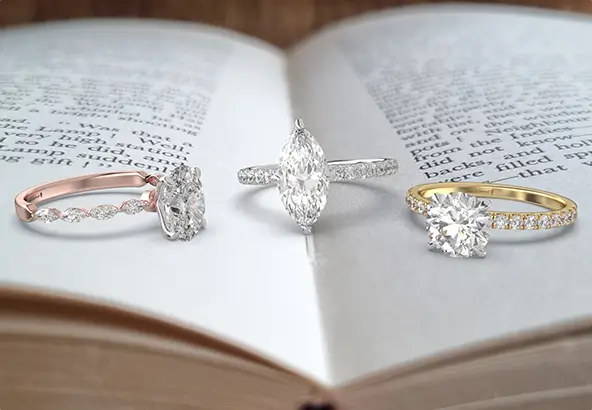
Lab Diamonds vs. natural Mined Diamonds – the Differences?
The differences between Natural Diamonds and Lab Grown Diamonds cannot be seen with the naked eye. Natural Diamonds have tiny amounts of nitrogen, while Lab Grown Diamonds have no nitrogen. This is actually one of the signifiers gemologists use to identify if a diamond is lab grown or natural.
Natural diamonds are created under the pressure of earth’s crust over millions of years, then they are mined, cut and polished. A Lab Grown Diamond is placed through the same circumstances, only in a lab setting. In fact, the process used to create a Lab Grown Diamond cuts down the grow time significantly, from millions of years to a couple of months. Then, the Lab Diamond is also cut and polished.
Are Lab Diamonds Real?
Very much So!! Lab Grown Diamonds are just as real as diamonds that are mined from the earth. They have shape, size, color and clarity grades, just like Natural Diamonds. Both Natural and Lab Grown Diamonds have the same physical and chemical properties and both come with diamond certifications.
Lab Diamonds vs. Natural – What do the Experts Say?
Visually, Natural Diamonds and Lab Grown Diamonds are exactly the same with the same hardness level and durability. In 2018 the Federal Trade Commission recognized Lab Diamonds as real. But do lab created diamonds test as real? Yes. In fact, The Gemological Institute of America, (GIA) “has been grading laboratory-grown diamonds since 2007. Beginning July 1, 2019, GIA Laboratory-Grown Diamond Reports and identification reports no longer use the term “synthetic.” The GIA Laboratory-Grown Diamond Report includes the standard GIA colour, clarity and cut grading scales for reference purposes.”
How are Lab Grown Diamonds Made?
Lab Grown Diamonds still start with a very small diamond, and with pressure like it would have through millions of years underground we are able to increase its size. Lab Grown Diamonds are referred to as CVD or HPHT, this is simply the process used to create the diamond.
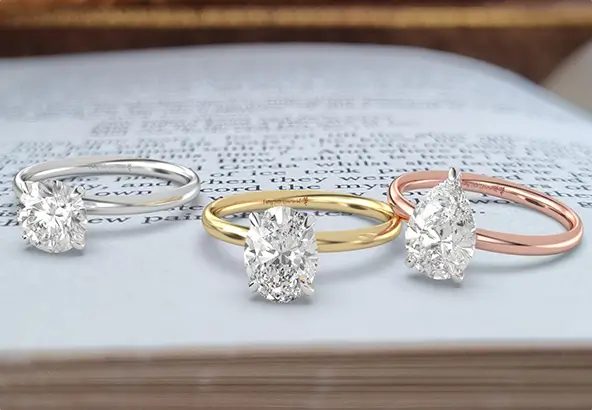
Lab Made Diamonds – Two Popular Methods
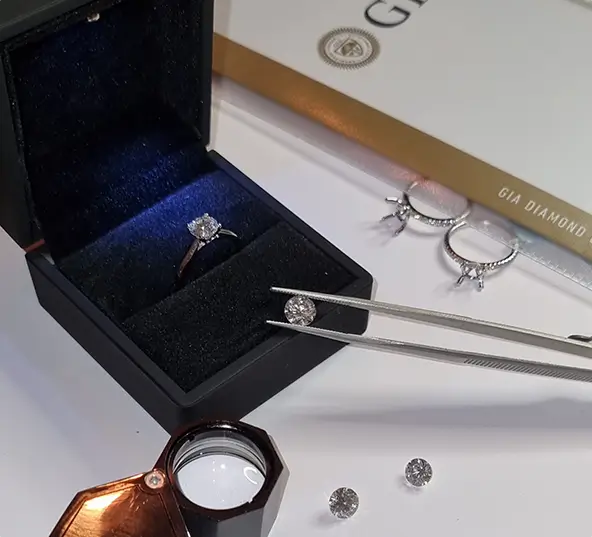
There are two processes used to create Lab Grown Diamonds:
Chemical Vapor Deposition Diamonds
The first process is called Chemical Vapor Deposition (CVD). A “seed crystal,” which is a very small diamond seed, is placed in a small chamber. The chamber is then filled with gases that are heated. Once the gases reach the right temperature, layers of carbon begin to form on the seed crystal. This causes the seed to grow and create a square-shaped diamond crystal.
High Pressure High Temperature Diamonds
The second process is called High Pressure High Temperature (HPHT) . This is meant to replicate the earth’s process of forming Natural Diamonds. In this process, natural graphite is placed in a large machine that crushes it with extreme pressure and temperatures. Under these conditions, the graphite turns into a diamond.
What is the Difference Between CVD and HPHT Diamonds?
You cannot tell the difference between a CVD and HPHT diamond with the naked eye. Both methods create a real diamond that is chemically and physically similar to natural diamonds. When it comes to grading Lab Grown Diamonds, the same 4 Cs: Colour, Cut, Clarity and Carat are applied.
Are Lab Grown Diamonds Good?
We think they are an excellent alternative. I have worked in the Jewellery industry for over 15 years (as of 2022) and I can not see the difference between the 2. If you compared a 1.00ct G colour VS2 natural diamond and a 1.00ct G colour VS2 lab grown diamond, all with the same specifications it would be impossible to tell the difference
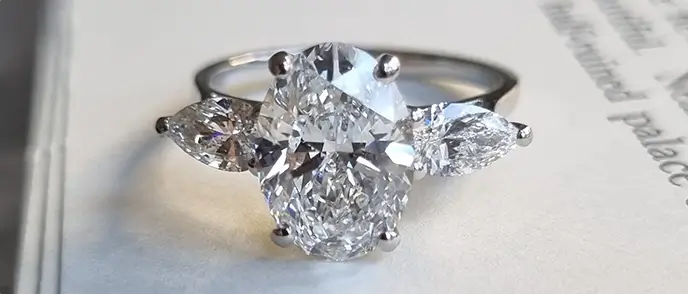
Pros of Buying a Lab Grown Diamond
- Lab Grown Diamonds are generally over 50% less than a Natural Diamond, which means you can purchase a significantly larger diamond and truthfully say it is a diamond. The difference cannot be detected with the naked eye when comparing a Lab Grown Diamond and a Natural Diamond of equal characteristics of the 4 C’s. Lab Grown Diamonds have the same physical and chemical properties as Natural Diamonds so they will be just as dazzling.
- Are Lab Grown Diamonds more ethical? Some think Lab Grown Diamonds are more ethical because there is no mining involved. However, The Kimberley Process put in place in 2003, has successfully prevented the flow of conflict diamonds.
- If your emphasis is not focused primarily on the resale value of the diamond, a Lab Grown Diamond is a good alternative to purchasing a more expensive Natural Diamond. To put it simply, you’ll get more bang for your buck.
Cons of Buying a Lab Grown Diamond
- A Natural Diamond has a rarity factor. Generally speaking, a natural diamond will hold its value better than a lab grown diamond because there is a finite supply. The basic laws of supply and demand maintain that as demand increases, especially with limited supply, value goes up. Grown Diamonds can be produced, they might not hold their value over time which means the resale prices could continue to depreciate as the market is flooded.
- A Lab Grown Diamond circumvents the environmental and ethical issues that come with mining Natural Diamonds, but there are sustainability issues with Lab Grown Diamonds as well. An HPHT processed diamond needs huge amounts of energy due to the high heat required to produce a diamond. The CVD method requires the same amount of energy needed to power a home for a month.
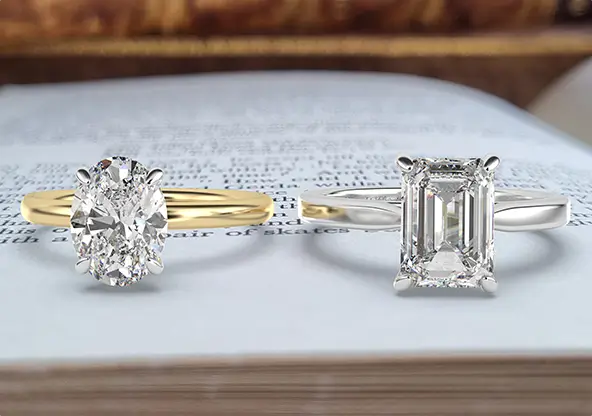
GIA Certified Lab Created Diamonds and IGI Certification
Since Lab Grown Diamonds are the same chemically as a natural Diamond, they come with certification. Today, most Lab Grown Diamonds are certified by IGI, International Gemological Institute. An IGI diamond report will give an “accurate assessment of a diamond’s cut, colour, clarity and carat weight according to strict international standards.” Additionally, Lab Grown Diamonds are being accepted and certified by the GIA, The Gemological Institute of America. GIA has developed sophisticated devices they use in order to screen and identify the difference between Natural Diamonds and Lab Grown Diamonds.
The price of Lab Grown Diamonds has dropped over the past few years and demand has grown. There Is a value for a Lab Grown Diamond, it just means the resale value is relatively new and will typically not match up with the resale value of natural diamonds.

